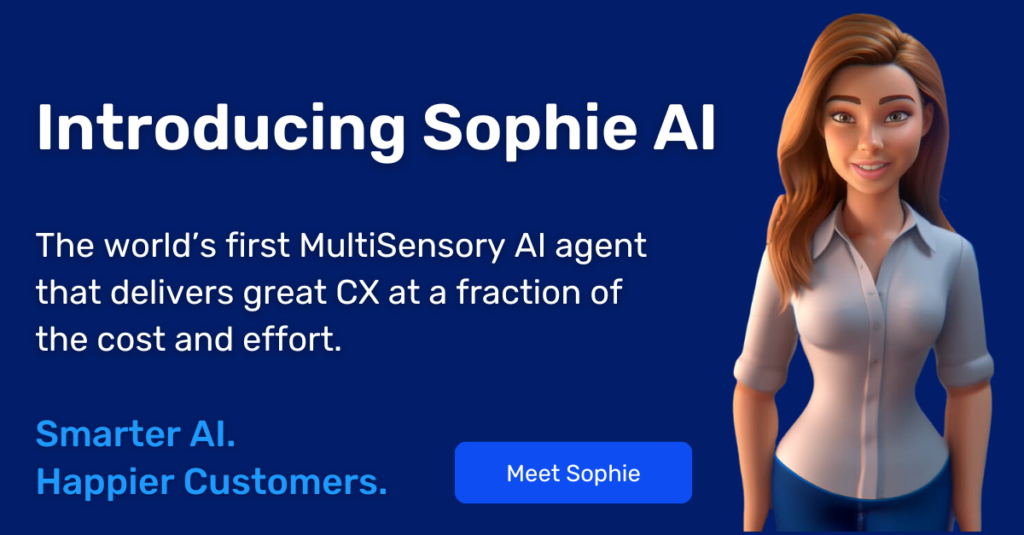Contents
Making the leap from engaging with customers and agents via text and voice, to visual and live video is a big step. While COVID introduced technology laggards to Zoom, bringing instant, live video to the mainstream. The impact of the jump from text and voice to video, is transformative, providing context and clarity to every interaction. However, not every visual engagement provider offers the ideal solutions to your needs. After speaking with hundreds of customers, enterprise buyers and our global team of customer success leaders, below are the five key questions to ask when evaluating a provider for your business.
Download our complete guide on choosing a visual assistance solution for your business
Internal Adoption
How will you help my team transition to visual engagement? After all, once I’ve bought the tool, driving adoption is my next hurdle.
Consider your team culture and their technology stack. In most enterprises, about 15-25% of the team are early adopters, and 15-25% will be laggards. The success and impact of your visual engagement program will depend on your ability to work with the early adopters, and bring along the ~80% who will need more prodding and training. You know the DNA of your team, and you know how hard it is to (or isn’t) to introduce something new to their world.
Consider how the provider will reduce the barriers to adoption. For example, strong platform integrations into your existing stack should make it easier for team members to use visual, AR and more – without needing to think about. Ask about their training and certification programs. Ask about their experience supporting this shift. Ask what KPIs they measure internally to track your adoption progress, and how they help your adoption laggards understand the performance improvements the early adopters are enjoying.
The barrier between buying great technology and making a real impact is the adoption and deployment of that technology. The right partner will ease your transition substantially.
End-User Adoption
How can I ensure that my customers and end-users will be ready to open their cameras, and embrace the more effective and efficient visual engagement? How does your platform remove user friction, and promote adoption?
End-users come to your brand because they expect something. They expect a great experience, they expect great service and support, and they expect you to meet their expectations. This requires meeting the customer or end-user on their terms.
The right technology partner will provide your end-users and customers with the right optionality, without introducing friction or disruption. Below are a few common examples:
- A customer interacting with a chatbot may have trouble communicating technical information. Provide users with the option to launch a visual workflow (we call this a visual journey). Invite users to submit photos and get agent or AI-powered AR guidance, so they can more easily and seamlessly jump from between text or voice and visual engagement.
- A customer engaging with your website’s chat support may not want to download a new mobile app just to open a mobile video support session – in which case you will want to send a text message to their phone for a frictionless video experience via their mobile web browser.
- This same user may not want to open their camera right now. They may be in the middle of a conversation and multi-tasking, they may be in their pajamas, or they just may not be ready to start a video right this minute. The right partner will provide customers with the option to schedule a video call for later.
- A customer on a laptop may not want to leave the session to sign paperwork in their email inbox, or be technically savvy enough to run a speed test or resolve their technical issues based on video communications alone. Your team should be able to invoke a document signature capability, or when requested by the end-user, run a speed test or even remotely control the end-user’s computer in order to help them complete their desired task.
- A user already on the phone may want to launch a video session, but stay on the phone for their audio. While an audio-less video-only session may sound simple, consider that the inability to offer a video-only session would result in endless echo, and ruin the user experience.
The right technology provider will eliminate any and all user friction, making the jump to visual engagement a seamless experience for your end-users.
Launch & Rollout
What can I expect over the first 3, 12 and 36 months?
With every new technology, leadership faces the need to balance the desire to make an immediate impact with a quick solution, and deploying a strategic, sustainable, integrated and customized solution. In an ideal world, an easily deployed, frictionless solution would demonstrate rapid impact. Over time, a shared deployment vision would enable further improvement in adoption, functionality, and impact.
The right partner shouldn’t require a compromise on time to market or depth of solution, but offer the full spectrum of capabilities that will meet both of these objectives. For example, a light, frictionless solution hosted by the provider can offer an easy first deployment, demonstrating immediate impact. Over time, customization and further API integrations will enable more robust, integrated capabilities, expanding the impact and potential of the solution.
Platform vs Point Solution
What expansion and innovation opportunities will be available to me?
There is a substantial difference between buying a platform versus buying a point solution.
Platforms offer the solutions you need today, as well as substantial expansion opportunities. While platforms can be harder to initially onboard, platform solutions remove the need to engage additional providers as your business evolves and matures – saving substantial resources and overhead.
While enterprises may partner with a point solution for a short term or limited engagement, established platforms are the preferred choice for enterprises due to their breadth, stability and reliability. To put it another way, if failure is not an option, a platform is the only true solution. However, if the future or dynamic are limited or uncertain, some platforms may not offer the most compelling offering. Leaders at organizations that recognize that the visual engagement genie is not going back into the bottle will rarely consider point solutions a viable alternative.
Modular platforms like TechSee allow clients to launch with a limited set of features, and continue expanding over time. This blended approach offers the below advantages of platform solutions, with the speed and simplicity of deployment of point solutions.
Common Advantages of Platforms include:
- Comprehensive Product Solutions: For example, a visual engagement platform will offer a full suite of solutions for self-service, live engagement, field or sales engagement, and more. These providers will go far beyond integrating photos or videos into an engagement, offering augmented reality guidance tools, co-browsing, secure remote device access and control, secure document signature tool and more.
- Unified Omnichannel Customer Experience: As a unified environment, platforms can enable continuity across self-service, live service and field service for a truly omnichannel, customer-centric experience.
- Customization and Cost to Maintain / Adapt: Open and integrated platforms will simplify deployment, reducing costs and expediting time-to-market with pre-configured integrations into the platforms you already use. Furthermore, the availability of robust APIs will allow you to easily customize data and operational flows to meet your changing requirements, with limited further resource investment.
- Cost of, Access to Innovation: Advanced platforms will continue investing in developing or partnering to bring the latest innovations to the market. For example, computer vision holds the potential to automate visual customer engagement. However, deploying a practical computer vision application requires substantial investment in new systems design and deployment, in addition to the time and specialized headcount required to deploy a practical solution. Many of TechSee’s most innovative clients have already deployed our proprietary, integrated, practical computer vision artificial intelligence solutions to automate and improve their performance.
- Long-Term Viability: Viable platform solutions are generally financially stable, with a minimum of 100 full-time employees and a roster of blue chip customers. Companies with this level of scope and vision are less likely to fail than smaller startups offering limited point solutions. Another positive indicator of long-term viability is investment from, or leadership alumni from other leading platform providers. For example, an investment from a leading CRM platform, and leadership with domain experience are strong indicators that a particular vendor has the experience and expertise to serve your business far into the future.
In comparison, point solutions offer simplistic but limited technology solutions to individual challenges. For example, a point solution will offer a live video tool that may or may not be easy to deploy, but that same provider will not offer much depth within the product, or expansion opportunity beyond that limited offering.
While a platform offers a full service kitchen with unlimited potential and choice, a point solution is the equivalent of a $1 slice of pizza. It’s simple, it’s fast, and it satisfies a short term need.
While small businesses are often attracted to point solutions, medium, large and enterprise businesses are generally poorly served by the limited short-term vision and value of point solutions. Furthermore, reliance on unstable startup solutions presents a considerable risk in today’s uncertain economy.
Culture & DNA
Is this the partner I want to work with for the long term?
They say that the best way to determine a potential employee’s cultural fit, is to consider if you would be happy to be stuck in an airport with them. The same can be said for a technology or solutions partner. Do you feel that they will be able to support you, realistically, given the challenges within your organization? Do you see them as thought leaders or subject matter experts in their domain, who will be able to understand your reality, objectives and help guide your team?
Ask to speak with a potential Customer Success Manager, and see how you vibe. Ask about their customer success program, and what you can expect from them. Consider how long your customer success representative has been with the company or in the space. Does this indicate a lack of stability at the company, or rapid growth and growing professionalism? If your team operates in monthly sprints, are they open to monthly progress meetings and alignments? Are QBRs standardized or flexible, and what can you expect to cover?
If you are a larger enterprise, ask about joining a customer advisory board. Do they have one? How often do they meet? Ask about executive access. Will you be able to get in front of the right people as needed? Will you be able to influence the roadmap or strategy?
Ask about their internal culture, and consider your own operational culture. Are they a Move fast and break things shop? Would this level of agility inspire or frustrate your team? What are the implications for the stability of their platform? How do they ensure reliability of their APIs as they regularly update and iterate?
Ask about their release cycles and customer communications. If they are missing any critical features, how soon can they commit to rolling them out? Do they have a beta program or the ability to prioritize rollout to your account? How will they ensure that your team is taking full advantage of their offering?
In Closing
Selecting the right partner for any initiative can be complex, and while there is a need to be thorough, analysis paralysis can also limit your progress. Before you start any initiative, define your objectives, requirements and vision – both in the long and short term. Then consider each of the 5 considerations outlined in this post as you evaluate your potential partners.
If you would like to learn more about our unique approach to visual engagement technology and how our professional and experienced success managers ensure the optimal impact for every customer, please reach out to us today. We look forward to hearing from you.







